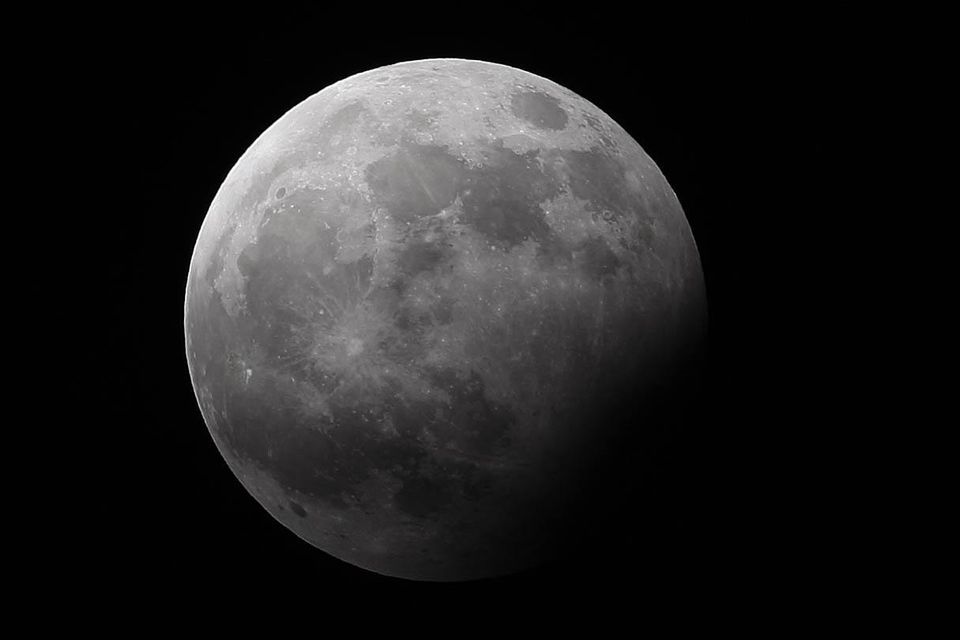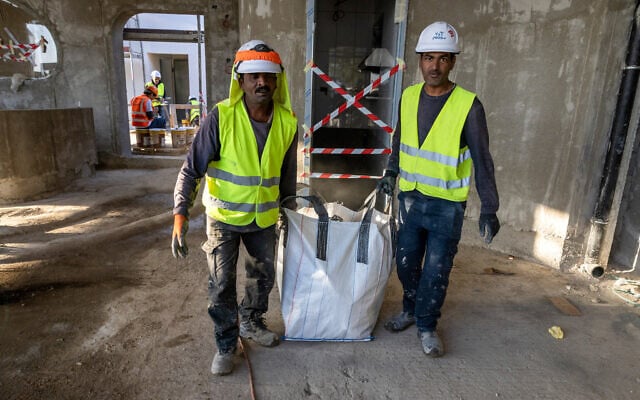New images show galaxy forming that is similar in mass to young Milky Way
In this image from Nasa’s James Webb Space Telescope, thousands of glimmering galaxies are bound together by their own gravity, making up a massive cluster formally classified as MACS J1423 (Nasa/PA)
New images show a galaxy forming that is similar to what our Milky Way’s mass might have been at the same stage of development.
Nasa’s James Webb Space Telescope has detected and “weighed” a galaxy that existed about 600 million years after the Big Bang.
Other galaxies Webb has detected at this time period are significantly more massive, Nasa said.
This galaxy has been nicknamed Firefly Sparkle as it looks like a “sparkle” or swarm of lightning bugs on a warm summer night.
Lamiya Mowla, co-lead author of the paper and an assistant professor at Wellesley College in Massachusetts, said: “I didn’t think it would be possible to resolve a galaxy that existed so early in the universe into so many distinct components, let alone find that its mass is similar to our own galaxy’s when it was in the process of forming.
“There is so much going on inside this tiny galaxy, including so many different phases of star formation.”
The research team modelled what the galaxy might have looked like if it were not stretched and discovered that it resembled an elongated raindrop. Suspended within it are two-star clusters toward the top and eight toward the bottom.
Kartheik Iyer, co-lead author and Nasa Hubble Fellow at Columbia University in New York, said this galaxy is “literally in the process of assembling”.
Webb’s data shows the Firefly Sparkle galaxy is on the smaller side, falling into the category of a low-mass galaxy. Billions of years will pass before it builds its full heft and a distinct shape.
Professor Mowla added: “Most of the other galaxies Webb has shown us aren’t magnified or stretched, and we are not able to see their ‘building blocks’ separately.
“With Firefly Sparkle, we are witnessing a galaxy being assembled brick by brick.”
Chris Willott from the National Research Council of Canada’s Herzberg Astronomy and Astrophysics Research Centre, a co-author and the observation program’s principal investigator, said: “This galaxy has a diverse population of star clusters, and it is remarkable that we can see them separately at such an early age of the universe.
“Each clump of stars is undergoing a different phase of formation or evolution.”
The galaxy’s projected shape shows that its stars have not settled into a central bulge or a thin, flattened disk, another piece of evidence that the galaxy is still forming, Nasa added.
Researchers cannot predict how this disorganised galaxy will build up and take shape over billions of years, but there are two galaxies that the team confirmed are “hanging out” within a tight perimeter and may influence how it builds mass over billions of years.
Firefly Sparkle is 6,500 light-years away from its first companion, and its second companion is separated by 42,000 light-years. The fully formed Milky Way is about 100,000 light-years across — all three would fit inside it.
Not only are its companions very close, but the researchers also think that they are orbiting one another.
Each time one galaxy passes another, gas condenses and cools, allowing new stars to form in clumps, adding to the galaxies’ masses.
Yoshihisa Asada, a co-author and doctoral student at Kyoto University in Japan, said: “It has long been predicted that galaxies in the early universe form through successive interactions and mergers with other tinier galaxies.
“We might be witnessing this process in action.”

A priceless piece of Moon rock donated to Ireland following a Nasa mission was destroyed in a fire, newly released records show (Niall Carson/PA)
By Cillian Sherlock, PA
A priceless piece of Moon rock donated to Ireland following a Nasa mission was destroyed in a fire, newly released records show.
Documents from the National Archives in Dublin detail the embarrassing affair, which saw the rock travel 380,000km (236,121 miles) to Earth before spending three years in a government basement and ultimately being lost in an accidental fire at Dunsink Observatory.
The lunar rock, which originated from the Apollo 11 mission in 1969, was given to President Eamon de Valera by American ambassador JG Moore in 1970.
Confidential documents from April 1984 show Irish officials were unsure where to display the specimen until the US offered to donate a second piece of lunar rock to Ireland in 1973, following another successful Apollo mission.
A memo discussing the original Moon rock notes: “This piece was given on September 4 1973, on the advice of the Department of Education, to the Dublin Institute for Advanced Studies for display at the Dunsink Observatory.
“This piece of Moon rock had lain in the basement of this department for three-and-a-half years due to indecision as to where it might best be displayed.
“It was decided to give the Moon rock to Dunsink when it became known that a second gift was to be made by the US Government and it was thought that some embarrassment would be caused if the first piece was not already on display.”
Unfortunately, rehoming the rock at Dunsink resulted in the artefact’s demise.
“The first piece was destroyed during a fire at Dunsink on October 3 1977,” documents reveal.
The second piece of Moon rock was given by the US in 1973, accompanied by a special plaque including the Irish tricolour.
“As the Moon rock was given direct to the President, it was put on display in the drawing room of Aras an Uachtarain,” one document noted.
Later, the Moon rock was loaned to Aer Lingus at the request of chief executive David Kennedy so it could be featured in the Aer Lingus Young Scientist Exhibition of 1976.
A further memo noted that a permanent display for the Moon rock at the Irish president’s official residence was felt to be inappropriate given that Aras an Uachtarain was only open to invited guests – and that the US intention was clearly for the item to be available for public viewing.
“The most appropriate museum collection in which it might be exhibited would be the geological or mineralogical collection – (but) the (National) Museum has no space to mount its geological exhibition and therefore the Moon rock would have to be put in storage, which would not satisfy the requirements,” it said.
Given the lack of suitable alternatives, it was suggested that the lunar rock be temporarily given to the operator of the national airline and major airports, Aer Rianta, where it could be displayed in its main airport exhibition space.
“Aer Rianta agreed to accept the plaque for their exhibition and the Office of Public Works (OPW) transferred the plaque to them on October 28 1975,” another memo noted.
Eight years later, a document noted that the Aer Rianta display had ended and the semi-state was no longer keen to have the Moon rock in its possession.
A new Geological Survey Office exhibition space was almost ready and the Department of the Taoiseach noted that this would represent the best future home and display for the artefact.
It was agreed that, if necessary, the Moon rock could be loaned back to the National Museum if it was a suitable inclusion for future displays.
– This article is based on documents in 2024/5/67
From new commercial Moon landers to asteroid investigations, expect a slate of exciting space missions in 2025

THE CONVERSATION
By Zhenbo Wang*, Associate professor of mechanical, aerospace and biomedical engineering, University of Tennessee

A rendering of Firefly's Blue Ghost lunar lander and a rover developed for the company's third mission to the Moon as part of NASA's CLPS (Commercial Lunar Payload Services) initiative. Photo: Firefly Aerospace/NASA
In 2024, space exploration dazzled the world.
NASA's Europa Clipper began its journey to study Jupiter's moon Europa. SpaceX's Starship achieved its first successful landing, a critical milestone for future deep space missions. China made headlines with the Chang'e 6 mission, which successfully returned samples from the far side of the Moon. Meanwhile, the International Space Station continued to host international crews, including private missions like Axiom Mission 3.
As an aerospace engineer, I'm excited for 2025, when space agencies worldwide are gearing up for even more ambitious goals. Here's a look at the most exciting missions planned for the coming year, which will expand humanity's horizons even further, from the Moon and Mars to asteroids and beyond:
Scouting the lunar surface with CLPS
NASA's Commercial Lunar Payload Services, or CLPS, initiative aims to deliver science and technology payloads to the Moon using commercial landers. CLPS is what brought Intuitive Machines' Odysseus lander to the Moon in February 2024, marking the first US Moon landing since Apollo.
In 2025, NASA has several CLPS missions planned, including deliveries by companies Astrobotic, Intuitive Machines and Firefly Aerospace.
These missions will carry a variety of scientific instruments and technology demonstrations to different lunar locations. The payloads will include experiments to study lunar geology, test new technologies for future human missions and gather data on the Moon's environment.
Surveying the sky with SPHEREx
In February 2025, NASA plans to launch the Spectro-Photometer for the History of the Universe, Epoch of Reionization and Ices Explorer, or SPHEREx, observatory. This mission will survey the sky in near-infrared light, which is a type of light that is invisible to the naked eye but that special instruments can detect. Near-infrared light is useful for observing objects that are too cool or too distant to be seen in visible light.
SPHEREx will create a comprehensive map of the universe by surveying and collecting data on more than 450 million galaxies along with over 100 million stars in the Milky Way. Astronomers will use this data to answer big questions about the origins of galaxies and the distribution of water and organic molecules in stellar nurseries - where stars are born from gas and dust.
Studying low Earth orbit with Space Rider
The European Space Agency, or ESA, plans to conduct an orbital test flight of its Space Rider uncrewed spaceplane in the third quarter of 2025. Space Rider is a reusable spacecraft designed to carry out various scientific experiments in low Earth orbit.
These scientific experiments will include research in microgravity, which is the near-weightless environment of space. Scientists will study how plants grow, how materials behave and how biological processes occur without the influence of gravity.
Space Rider will also demonstrate new technologies for future missions. For example, it will test advanced telecommunication systems, which are crucial for maintaining communication with spacecraft over long distances. It will also test new robotic exploration tools for use on future missions to the Moon or Mars.
Exploring the Moon with M2/Resilience
Japan's M2/Resilience mission, scheduled for January 2025, will launch a lander and micro-rover to the lunar surface.
This mission will study the lunar soil to understand its composition and properties. Researchers will also conduct a water-splitting test to produce oxygen and hydrogen by extracting water from the lunar surface, heating the water and splitting the captured steam. The generated water, oxygen and hydrogen can be used for enabling long-term lunar exploration.
This mission will also demonstrate new technologies, such as advanced navigation systems for precise landings and systems to operate the rover autonomously. These technologies are essential for future lunar exploration and could be used in missions to Mars and beyond.
The M2/Resilience mission is part of Japan's broader efforts to contribute to international lunar exploration. It builds on the success of Japan's Smart Lander for Investigating Moon, or SLIM, mission, which landed on the Moon using a precise landing technique in March 2024.
Investigating an asteroid with Tianwen-2
China's Tianwen-2 mission is an ambitious asteroid sample return and comet probe mission. Scheduled for launch in May 2025, Tianwen-2 aims to collect samples from a near-Earth asteroid and study a comet. This mission will advance scientists' understanding of the solar system's formation and evolution, building on the success of China's previous lunar and Mars missions.
The mission's first target is the near-Earth asteroid 469219 Kamoʻoalewa. This asteroid is a quasi-satellite of Earth, meaning it orbits the Sun but stays close to Earth. Kamoʻoalewa is roughly 131-328 feet (40-100 meters) in diameter and may be a fragment of the Moon, ejected into space by a past impact event.
By studying this asteroid, scientists hope to learn about the early solar system and the processes that shaped it. The spacecraft will use both touch-and-go and anchor-and-attach techniques to collect samples from the asteroid's surface.
After collecting samples from Kamoʻoalewa, Tianwen-2 will return them to Earth and then set course for its second target, the main-belt comet 311P/PANSTARRS. This comet is located in the asteroid belt between Mars and Jupiter.
By analysing the comet's materials, researchers hope to learn more about the conditions that existed in the early solar system and possibly the origins of water and organic molecules on Earth.
Solar system flybys
Besides the above planned launch missions, several space agencies plan to perform exciting deep-space flyby missions in 2025.
A flyby, or gravity assist, is when a spacecraft passes close enough to a planet or moon to use its gravity for a speed boost. As the spacecraft approaches, it gets pulled in by the planet's gravity, which helps it accelerate.
After swinging around the planet, the spacecraft is flung back out into space, allowing it to change direction and continue on its intended path using less fuel.
BepiColombo, a joint mission by ESA and the Japan Aerospace Exploration Agency, JAXA, will make its sixth flyby of Mercury in January 2025. This manoeuvre will help the spacecraft enter orbit around Mercury by November 2026. BepiColombo aims to study Mercury's composition, atmosphere and surface geology.
NASA's Europa Clipper mission, which launched in October 2024, will make significant progress on its journey to Jupiter's moon Europa. In March 2025, the spacecraft will perform a flyby manoeuvre at Mars.
This manoeuvre will help the spacecraft gain the necessary speed and trajectory for its long voyage. Later in December 2026, Europa Clipper will perform a flyby of Earth, using Earths gravity to further increase its momentum so it can arrive at Europa in April 2030.
The ESA's Hera mission will also perform a flyby of Mars in March 2025. Hera is part of the Asteroid Impact and Deflection Assessment mission, which plans to study the Didymos binary asteroid system. The mission will provide valuable data on asteroid deflection techniques and contribute to planetary defense strategies.
NASA's Lucy mission will continue its journey to explore the Jupiter Trojan asteroids, which share Jupiter's orbit around the Sun, in 2025. One key event for Lucy is its flyby of the inner main-belt asteroid 52246 Donaldjohanson, scheduled for April 20, 2025.
This flyby will provide valuable data on this ancient asteroid's composition and surface features, which can help researchers gain insights into the early solar system. The asteroid is named after the paleoanthropologist who discovered the famous "Lucy" fossil.
ESA's Jupiter Icy Moons Explorer, or JUICE, mission will perform a Venus flyby in August 2025. This manoeuvre will help JUICE gain the necessary speed and trajectory for its journey to Jupiter. Once it arrives, JUICE will study Jupiter's icy moons to understand their potential for harbouring life.
2025 promises to be a groundbreaking year for space exploration. With NASA's ambitious missions and significant contributions from other countries, we are set to make remarkable strides in humanity's understanding of the universe. These missions will not only advance scientific knowledge but also inspire future generations to look to the stars.
*Zhenbo Wang receives funding from NASA.


















